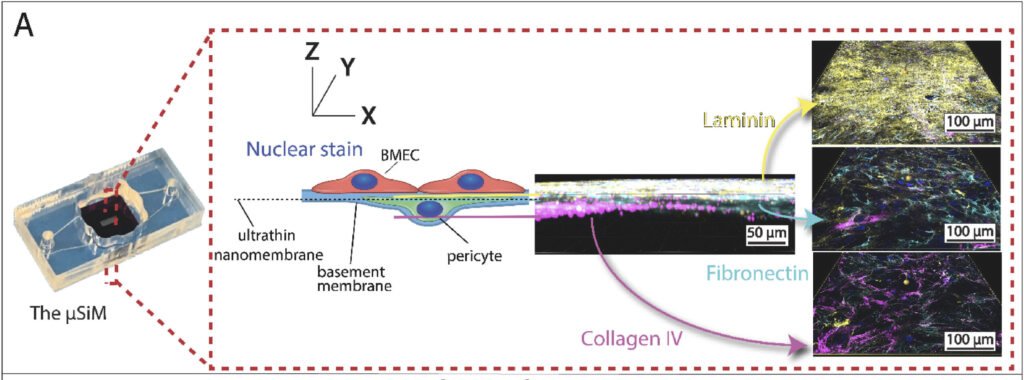Researchers at the University of Rochester have developed a brain-on-a-chip platform that models how diseases such as sepsis and neurodegenerative conditions damage the blood-brain barrier. This barrier protects the brain from harmful substances in the bloodstream, and its breakdown can lead to serious neurological complications. The new platform allows scientists to observe how inflammation and disease-related stress signals weaken this barrier and trigger harmful changes in brain cells.
The device uses human tissue embedded in microchips to simulate the structure and function of the blood-brain barrier. Researchers introduced cytokine storms—intense immune responses often seen in severe infections—and observed how they caused blood proteins like fibrinogen to leak into the brain. These proteins, combined with inflammatory signals, disrupted astrocytes, which are support cells that help maintain brain health.
The study also found that natural blood flow helps reinforce the barrier’s strength, suggesting that mechanical forces play a role in protecting the brain. This insight could inform new therapies that stabilize the barrier during illness or injury.
The team plans to expand the platform by adding microglia, the brain’s immune cells, to better understand how inflammation affects neurons. This will help researchers study the progression of diseases like Alzheimer’s and Parkinson’s and test potential treatments in a controlled environment.
Article from the University of Rochester: Brain-on-a-chip technology reveals how sepsis and neurodegenerative diseases damage the brain
Abstract in Advanced Science: Shear Conditioning Promotes Microvascular Endothelial Barrier Resilience in a Human BBB-on-a-Chip Model of Systemic Inflammation Leading to Astrogliosis

